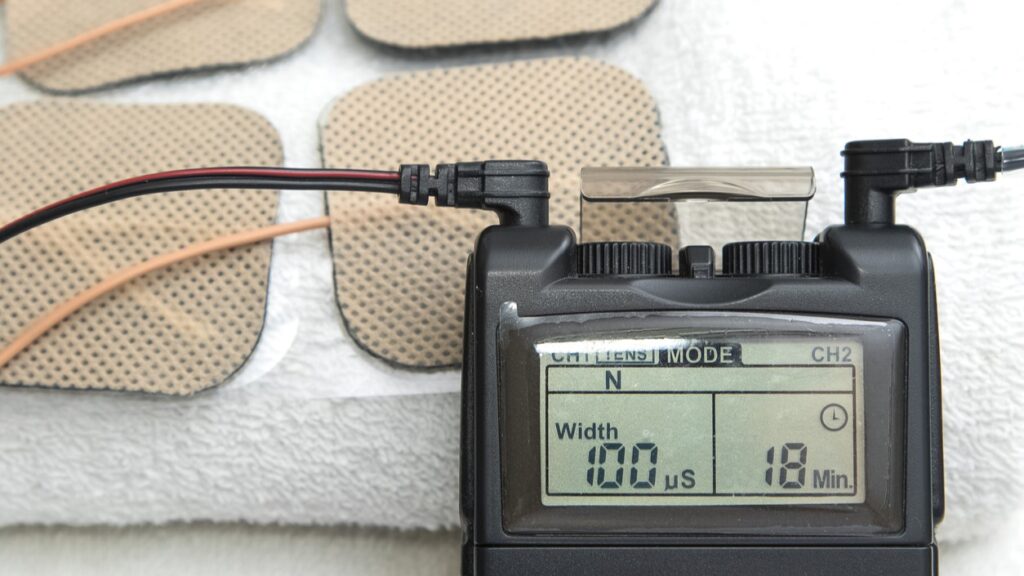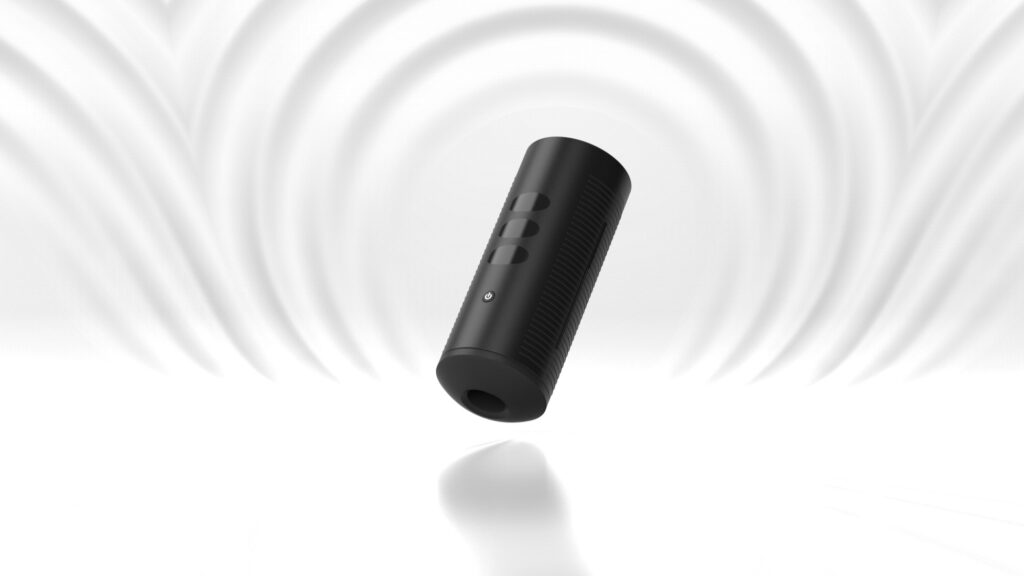You’re barely a few thrusts in when it happens again. That sharp, rising edge you’ve tried to breathe through, distract from, or delay is already taking over. You tense, try to hold back, and hope this time will be different. But it isn’t. Once more, you’ve climaxed far sooner than you wanted too.
The moment leaves you feeling defeated and disconnected, both from your partner and from yourself.
Premature ejaculation (PE) can feel like your body is working against you: uncooperative, difficult to manage, and deeply frustrating. And without a definitive cure, many individuals are left cycling through trial-and-error treatments that don’t fully deliver.
But a new wave of tech-based treatments is on the horizon, offering a potential drug-free, on-demand alternative. A 2024 study in IJIR: Your Sexual Medicine Journal reviews preliminary research on how they may help those grappling with PE delay ejaculation.
Although more in-depth studies are needed, the findings provide hope for improving quality of life and regaining a sense of control in the bedroom.
What is premature ejaculation?

The International Society for Sexual Medicine (ISSM) defines premature ejaculation based on three criteria:
1. Ejaculation happens very quickly after vaginal penetration.
2. There is a consistent inability to delay ejaculation during most or all sexual encounters involving vaginal penetration.
3. The experience leads to personal distress, frustration, or avoidance of sexual intimacy.
In lifelong premature ejaculation, which begins with a person’s first sexual experience and continues over time, climax typically occurs within one minute. In acquired premature ejaculation, which develops after a period without ejaculation concerns, it usually happens within three minutes.
Notably, this definition focuses on heterosexual vaginal sex. There is limited information on how to define premature ejaculation in the context of anal sex or same-sex encounters.
Since PE is often self-reported and diagnosed based on distress rather than clear medical signs, its true prevalence is hard to measure. Older studies reported that 20–30% of men experienced PE. However, newer research using stricter criteria suggests the actual rate is closer to 5%.
What causes premature ejaculation?
The exact causes of premature ejaculation aren’t fully understood.
Yet for lifelong PE, experts believe it’s mainly due to changes in brain chemicals that help regulate ejaculation. Increased sensitivity of the penis head, erectile difficulties, genetic differences, hormone imbalances, and prostate problems may also play a role.
On the other hand, acquired PE is usually linked to medical, mental health, or relationship issues.
Common premature ejaculation treatments

Since the 1990s, premature ejaculation has mainly been treated with topical anesthetics, antidepressants, and behavioral therapy. While they may offer temporary relief for some, PE often returns once they’re discontinued.
Topical anesthetics such as numbing creams or sprays used before sex are not popular. Up to 75% of men report dissatisfaction, and only about 10% keep using them.
Selective serotonin reuptake inhibitors (SSRIs) may delay ejaculation by boosting serotonin, but many men stop due to minimal effects.
As for behavioral therapy, it teaches techniques to build confidence and reduce anxiety during sex. It helps 45–65% of men in the short term, though long-term effects are still uncertain.
Tech treatments for premature ejaculation
Looking for additional solutions, Dr. Ilan Gruenwald and Dr. Arik Shechter explored emerging, research-backed technologies in their article, “New technologies developed for treatment of premature ejaculation.”
Neuromuscular stimulation

In their own 2017 study, Shechter and colleagues tested transcutaneous electrical nerve stimulation (TENS) on the perineal area of 23 men with lifelong PE. The aim was to keep key pelvic muscles slightly contracted using TENS, which could disrupt the reflex that triggers ejaculation.
Results showed a significant increase in ejaculation time from 124.6 seconds to 311.4 seconds. Most participants tolerated the treatment well, though a few reported discomfort or pain during sessions.
The In2 patch®
Building on these promising results, a miniaturized, on-demand perineal TENS device called the In2 patch® was developed. A 2019–2020 study by Shechter and colleagues tested the device in 59 men with lifelong PE, comparing it to a placebo patch.
In the active group, average ejaculation time increased from 67 to 123 seconds—a meaningful improvement. The placebo group also saw a small rise, from 63 to 81 seconds, but it wasn’t statistically significant.
No serious side effects occurred. However, two mild issues were reported: one participant experienced vibration-related discomfort near an old scar, and another had pelvic pain during sex.
Posterior tibial nerve stimulation
Another technique researchers investigated was transcutaneous posterior tibial nerve stimulation (TPTNS), which targets nerves involved in the buildup and release of semen.
In a small phase II trial, 54% (6 out of 11) of men showed a threefold increase in ejaculation time, with minimal side effects. A second trial with 60 men showed only modest gains. The placebo group improved too, possibly due to the sensation of probe contact.
Masturbation aid devices

Beyond nerve stimulation, researchers have also explored physical tools to help retrain arousal response. One approach pairs behavioral training with the Myhixel® device, a masturbation aid designed to reduce sensitivity and simulate intercourse.
In a clinical trial, 52 men completed an eight-week sphincter control program; half used the Myhixel® device alongside the training.
Though only 40 participants completed the study, those who used the device lasted about 90 seconds longer during sex. In comparison, the group that did training alone improved by just 30 seconds.
The findings suggest the device may enhance behavioral training by offering more targeted stimulation.
Advancing treatment for premature ejaculation
Premature ejaculation has long lacked reliable, long-term solutions, but early research into emerging technologies offers promise.
From nerve stimulation patches to smart training devices, these innovations have shown meaningful gains in ejaculation time with minimal side effects. Noninvasive and drug-free, they could mark a shift toward more flexible, on-demand treatment options—making spontaneous sex more feasible than with creams or pills that require advance use.
Still, larger and longer-term studies are needed to confirm their effectiveness. Future research should also explore how PE plays out in same-sex relationships, anal sex, and casual or newer partnerships.
For a condition that affects confidence, connection, and pleasure, innovation isn’t just welcome—it’s overdue.




